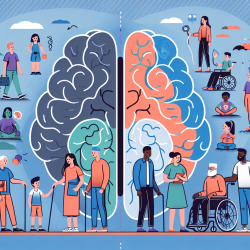Understanding the Importance of School Mental Health
School mental health is a critical aspect of the educational ecosystem, influencing student success and well-being. To effectively address the diverse needs of students, schools must implement strategic approaches like needs assessment and resource mapping. These processes not only identify the gaps in mental health services but also leverage existing resources to optimize support for students.
What is a Needs Assessment?
A needs assessment is a collaborative process that involves evaluating the strengths and gaps within a school or district's mental health services. It integrates data and perspectives from various stakeholders, including parents, students, and mental health professionals, to clarify priorities and inform quality improvement.
By conducting a needs assessment, schools can tailor their mental health services to address the most pressing concerns, ensuring that the support provided is relevant and effective. This process also helps in identifying existing strengths that can be utilized to fill gaps and inform resource allocation.
What is Resource Mapping?
Resource mapping is an ongoing process that visually represents and shares information about available supports and services. In the context of school mental health, it involves identifying resources within the school and the surrounding community across a multi-tiered system of support.
A resource map provides a comprehensive overview of services, including eligibility details, to improve student follow-through and coordination of care. This mapping is crucial for schools collaborating with multiple agencies, as it helps reduce duplication and inappropriate use of services.
Integrating Needs Assessment and Resource Mapping
Combining needs assessment with resource mapping offers a robust framework for enhancing school mental health systems. While the needs assessment identifies challenges and priorities, resource mapping provides a clear representation of available resources to address these needs.
For example, if a needs assessment reveals a high level of student stress, resource mapping can help identify mental health services and supports available to address this issue. This integrated approach ensures that schools can effectively meet the diverse needs of their students.
Best Practices for Conducting Needs Assessment and Resource Mapping
- Convene a diverse team including parents, students, school staff, and community health providers.
- Review existing data such as attendance records, behavioral surveys, and crisis referrals to identify needs.
- Utilize psychometrically sound and culturally relevant assessment tools.
- Develop a comprehensive resource map that includes detailed information about each service.
- Ensure the resource map is easily accessible and regularly updated.
Conclusion
By implementing a strategic approach that integrates needs assessment and resource mapping, schools can significantly enhance their mental health services. This not only improves the quality of support provided to students but also ensures that resources are used effectively and efficiently.
For more information, please follow this link.










